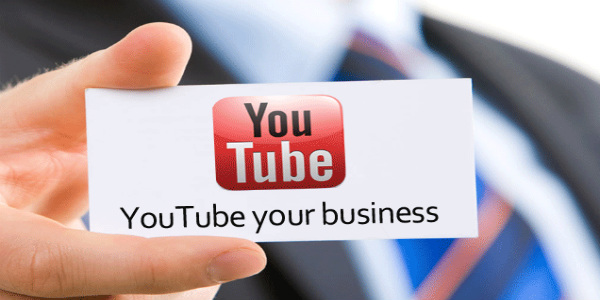We broke up with YouTube but why credit unions shouldn’t

Yes, I broke up with YouTube. Well, we broke up with YouTube.
And you know what they say about breaking up… Actually, it was quite an easy decision to make simply for the fact that our videos are not produced for consumption by the general public. We have a very specific target audience we are trying to reach with our videos and do not need YouTube’s services at the moment.
Now, please note that I’m not suggesting that credit unions should make the same decision. In fact, credit unions should be on YouTube. Consumers are on YouTube. Consumers are on Vine. Consumers are on Instagram. But let’s just focus just on YouTube for now simply for the fact that “over 6 billion hours of video are watched each month on YouTube—that’s almost an hour for every person on Earth, and 50% more than last year. (1)”
One important thing to consider is when a credit union uses YouTube, one must examine the intent of Google. Google’s motivations are at an ongoing conflict with the credit union’s motives. Google simply wants to make money off of ads on YouTube. Credit unions want to use YouTube for the purpose of its video streaming service as well as various sharing functionality.
I think all of us at some point have fallen victim to Google’s ploy. I kindly name it the YouTube Black Hole. We click on a video and get distracted by another video on the sidebar. We click on that video and begin watching it. The cycle repeats itself and this feeds back into Google’s primary motives of making money. The longer one spends on YouTube, the more ad money Google can make.
So how do we break free of the YouTube Black Hole and go beyond using YouTube as a means to an end?
Let’s say a credit union is on YouTube and has a couple of videos uploaded. First, let’s take a step back and ask what’s the purpose of these videos? Consumers are already drowning in a sea of video content.
Now, let’s say a credit union has identified a specific purpose behind a particular video. For example, let’s say this credit union wants to promote a special rate for car loans. Now, let’s say a person watches the video and actually wants to act on the promotion. How can they respond to this offer easily? Do they have to type in a URL to get to a website/microsite? Can they click on a link within the video? Does the video even provide an easy method for the viewer to take the next step and ultimately convert?
In other words, has this credit union (1) provided a specific call to action and (2) made it easy for the consumer to respond to the call to action?
And despite the motives of Google, YouTube is good for credit unions. It’s free. It’s easy to use and the videos uploaded can help to humanize a credit union in a digital economy. Most importantly, YouTube is where the people are. But are you thinking strategically about how you can use YouTube to generate leads for loans and new accounts? Have you even considered the YouTube Black Hole issue? Do you use the video embed function and put YouTube videos directly on your site or landing page as opposed to linking to YouTube itself?
This forces the biggest question: how is a credit union driving traffic back to its website or to a landing page if members are watching videos on YouTube, or on any channel for that matter? Sure, if it’s an entertainment or community oriented video, it’s not really necessary for there to be a call to action at the conclusion of the video. But what about the videos in which a credit union is trying to spark some action for the viewer to take, like promotional videos? Hopefully, the video is promoting more than just great rates and service.
Yes, YouTube is a fantastic tool, along with other video streaming services like Vimeo and Viddler. And if a credit union is only interested in having a repository for old TV spots, they should keep on using the tool like they have been. Remember, video is part of a credit union’s brand and therefore, the message and goal should be well thought out.
If credit unions are looking to engage with consumers and wanting to drive action through their video production efforts in the form of generating leads for loans and new accounts, take a moment to think about how credit unions can create calls to action to drive consumers to their website to convert on a specific offer. A good way to start is to begin by mapping the consumer journey and user experience a credit union would like for a member to have.
And because I didn’t want you to get distracted with the equivalent of a cat video in this post, you can check out other mind boggling stats about YouTube in the link below.





